Arezzo is a beautiful Italian city with wonderful historical buildings: numerous churches and other objects. It delights with the wealth of works of art, such as frescoes, paintings, sculptures, and stained glass windows in both museums and churches. Piazza Grande is one of the most beautiful squares in Italy, hosting many events throughout the year. Arezzo undoubtedly attracts tourists with its rich history, impressive architecture and vibrant cultural life.
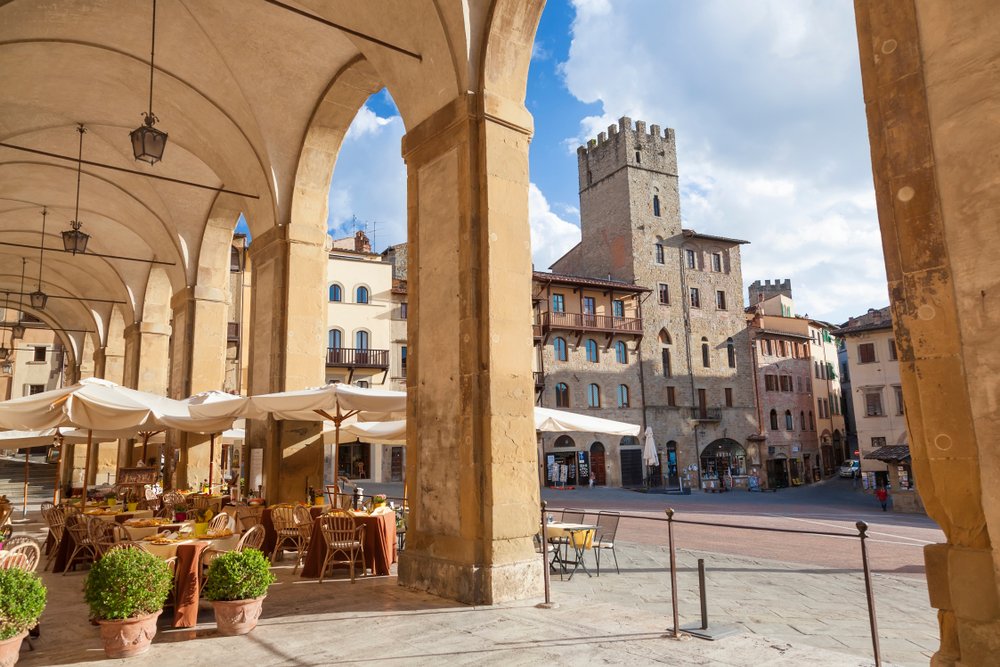
The city of Arezzo located in Central Italy in the Tuscany region, the capital of the province of Arezzo. The city founded by the Etruscans in the 9th century BC received a name very similar to its modern one, Arretium. Works of art of very high value come from this period, such as: Chimera, a bronze sculpture found in 1533.

Piazza Grande
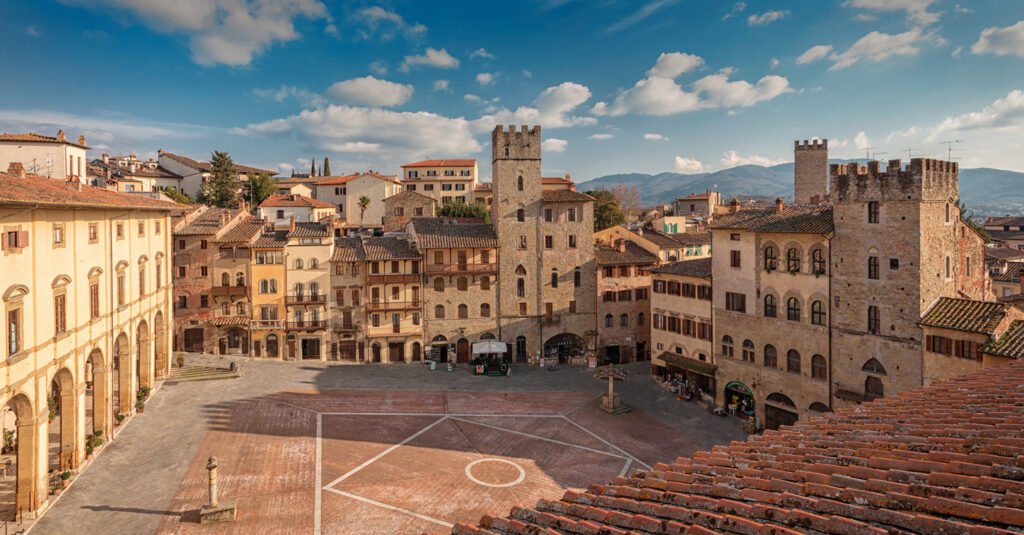
Piazza Grande is the heart of Arezzo, located on the site of the Roman forum. Piazza Grande, also known as Piazza Vasari, is trapezoidal in shape on a very sloping slope. Here you can see a real anthology of architectural styles from Romanesque to Baroque. The western side of the square is the Romanesque structure of the Chiesa di Santa Maria della Pieve church and the Baroque structure of the Tribunal Palace. On the north side of Piazza Grande is the impressive Palazzo delle Logge. The southeastern part of the square is Palazzo Lappoli, composed of buildings of various heights with wooden balconies. The southwestern part of the square is Torre Faggiolana, the house of a noble family. It is worth mentioning that in July, a ceremonial parade with banners of individual city families takes place on the square.
Fraternità of Laici Palace
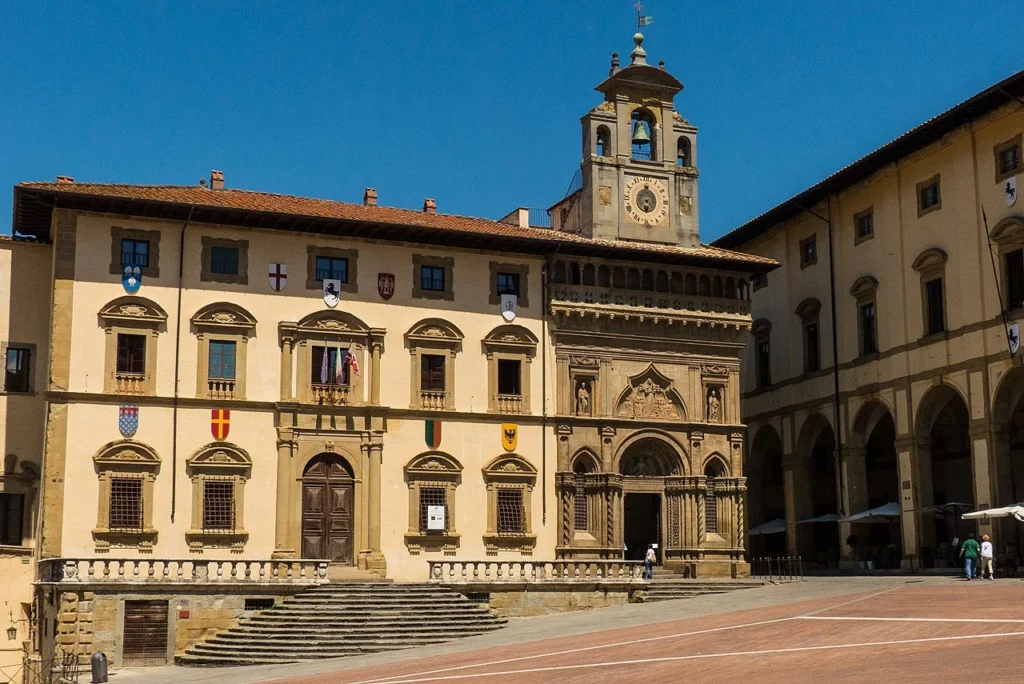
The Palazzo della Fraternita dei Laici tells a significant part of the history of Arezzo. Palazzo Fraternita dei Laici is one of the city’s most important monuments. It is located in Piazza Grande, next to the large loggia at the top of the square. Its construction began in 1375 and was completed by Giorgio Vasari in the mid-16th century. At the end of the 18th century, the palace was restored thanks to the support of the Grand Duke of Lorraine, Peter Leopold. For many years it was the seat of the Municipal Court, and since 2010 it has housed the Museum and Fraternity with an important historical archive.
St. Cathedral Peter and Saint Donat
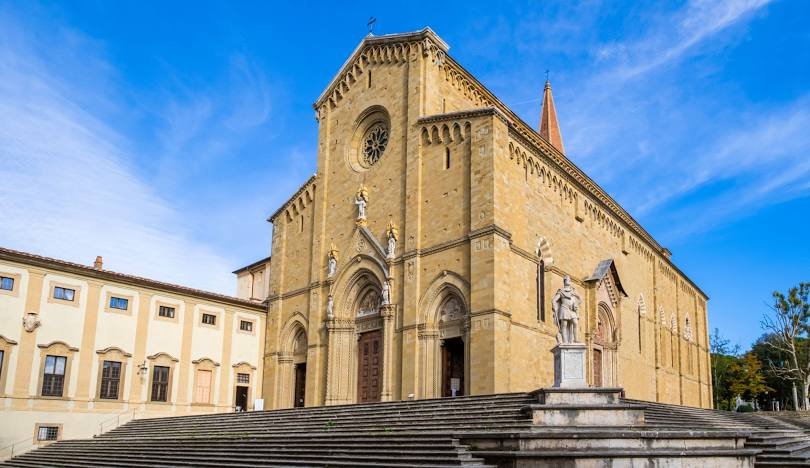

A medieval cathedral located on a hill with frescoes by Piero della Francesca and spectacular stained glass windows. This Roman Catholic cathedral sits on the site of a pre-existing Paleo-Christian church and perhaps the acropolis of the ancient city. The first cathedral in Arezzo was built on the nearby Hill of Pionta, above the burial place of Donatus of Arezzo, martyred in 363. In 1203, Pope Innocent III had the cathedral moved within the city walls to its current location. However, the cathedral lost the relics of Donatus, which were moved to the church of San Donato in Castiglione Messer Raimondo (now the province of Teramo). Despite this, the church is still entitled to Saint. Donat and houses, in the main altar, a 14th-century arch named after him. Construction of the current structure, started in 1278.
Basílica de San Francesco
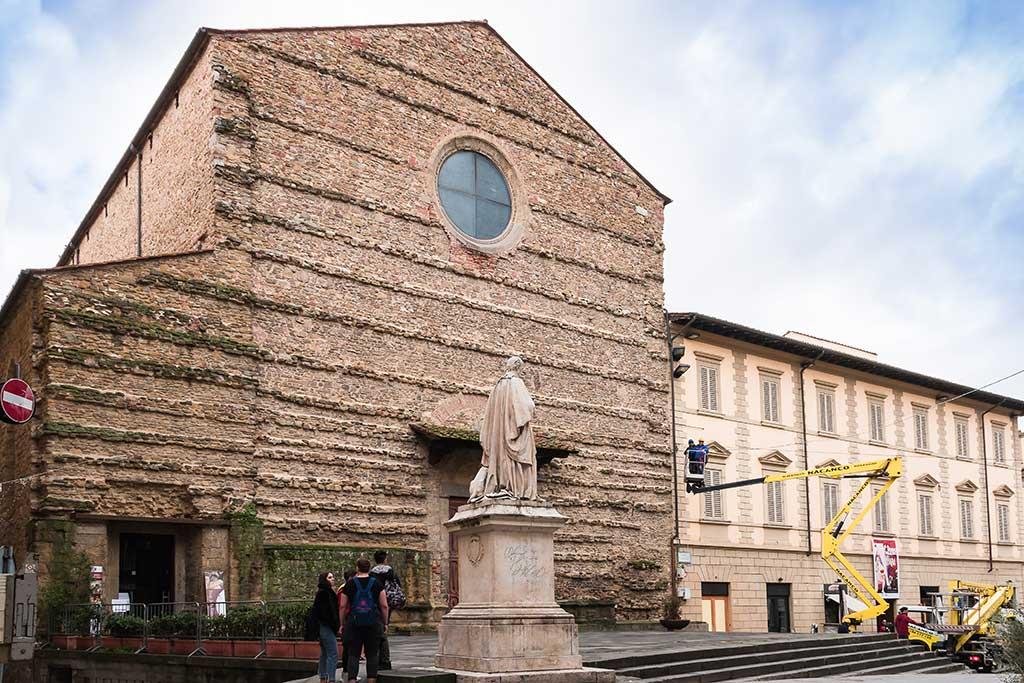

The Basilica of San Francesco is a late medieval church in Arezzo, dedicated to Saint. Francis of Assisi. It is particularly known for the fresco series The Legend of the True Cross by Piero della Francesca placed in the presbytery. San Francesco is the second church built by the Franciscans in Arezzo, an earlier church being located outside the city walls and destroyed during the Occupation. The building work on San Francesco was begun around 1290. The decoration of its façade was never realised.
Vasari House Museum

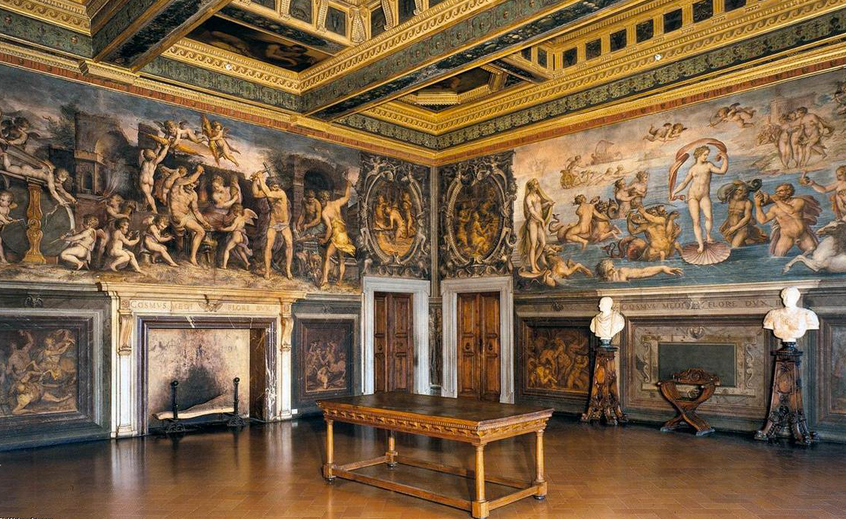
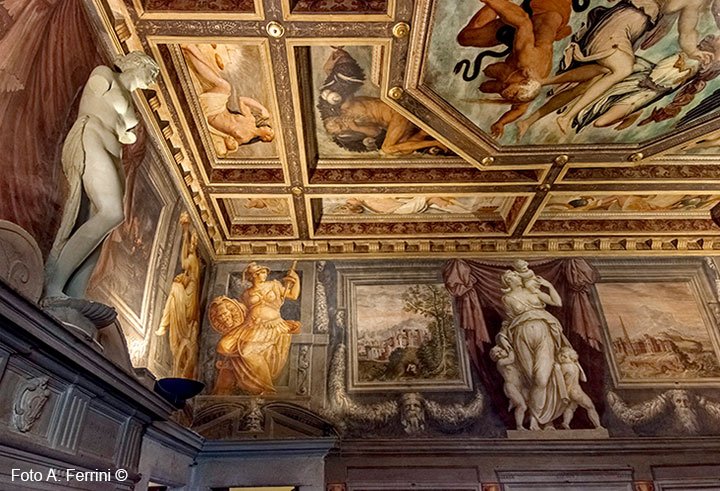
The Casa Vasari Museum in Arezzo is dedicated to the illustrious painter, architect, and sculptor Giorgio Vasari, who was born in Arezzo in 1511. Giorgio Vasari personally acquired this building and undertook its renovation and decoration with the assistance of his pupils from 1542 to 1548. Following his marriage to Niccolosa Bacci, a member of a prosperous merchant family in the city responsible for the construction of the main chapel of the Basilica di San Francesco, Vasari resided in this house for a brief period, around 1550, until new artistic commitments compelled him to relocate to Rome and later to Florence.
Visitors to the Casa Vasari Museum can gain a unique glimpse into one of the rare surviving examples of a late Renaissance artist’s residence. The house spans three floors and features a rooftop garden. The main floor comprises an apartment with various rooms, including the Camera della Fama e delle Arti, the Camera delle Muse, the Camera di Abramo, and the Salone del Camino. These rooms are adorned with frescoes and tempera paintings by Vasari and some of his pupils, showcasing allegorical and celebratory themes.
Santa Maria della Pieve
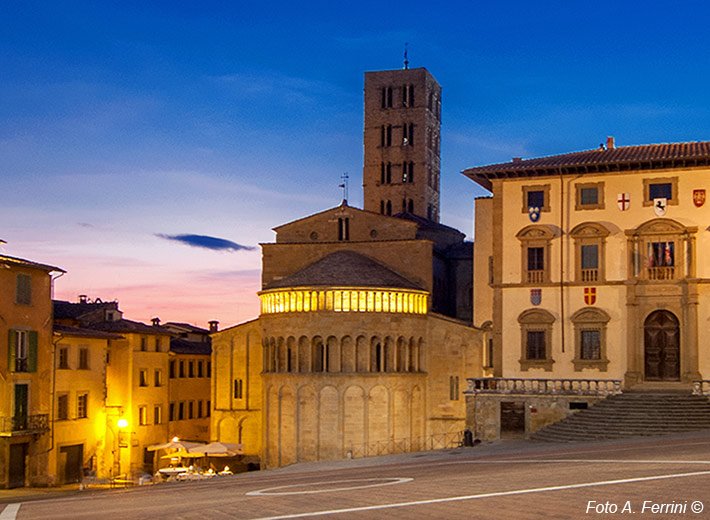
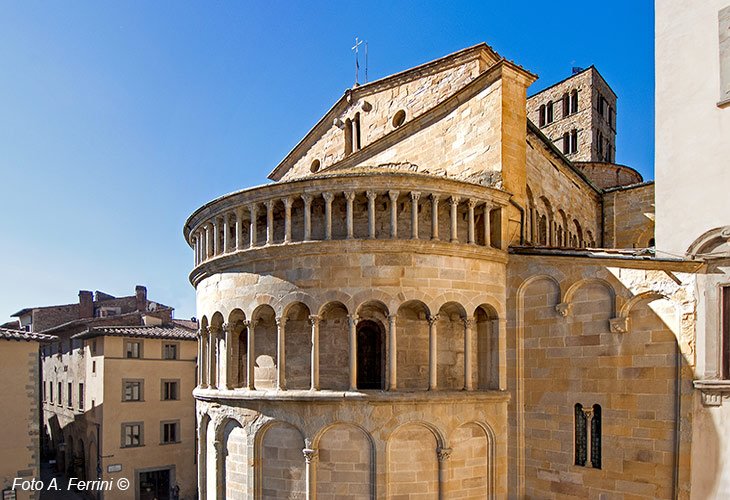
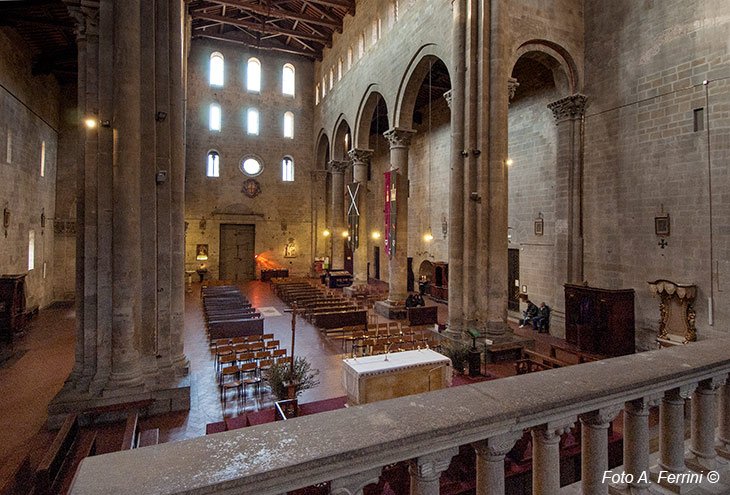
The church of Santa Maria della Pieve is documented as early as 1008, and during Arezzo’s common period it was a stronghold of the city’s struggle with the bishops. After the construction of the nearby cathedral and palace, the church, which had already been rebuilt in the 12th century, was further renovated with its façade and apse, and the interior was redone in the Gothic style (13th century).
Monument to Grand Duke Ferdinand III of Lorraine
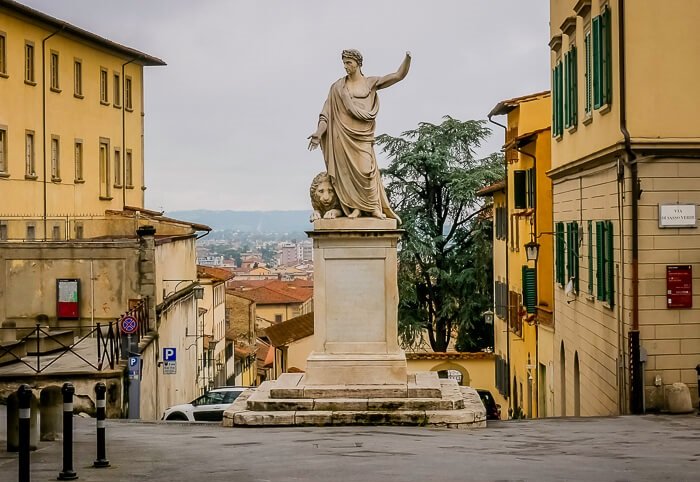

The monument to the Grand Duke of Tuscany, Ferdinand III, in the form of a marble statue, dates back to 1822, was erected in Piazza Grande, and is now moved to Piazza di Murello. Ferdinand III was the second son of the Grand Duke of Tuscany, King of Hungary and Bohemia, Peter Leopold II of Habsburg-Lorraine. When the latter became Emperor of the Holy Roman Empire in 1790, Ferdinand took his place as Grand Duke of Tuscany. He held the title of Grand Duke until 1799, when, despite strong Italian resistance (especially the anti-French Viva Maria movement), Napoleon conquered Italy, forcing Ferdinand III to retreat to Vienna.
Santa Maria delle Grazie

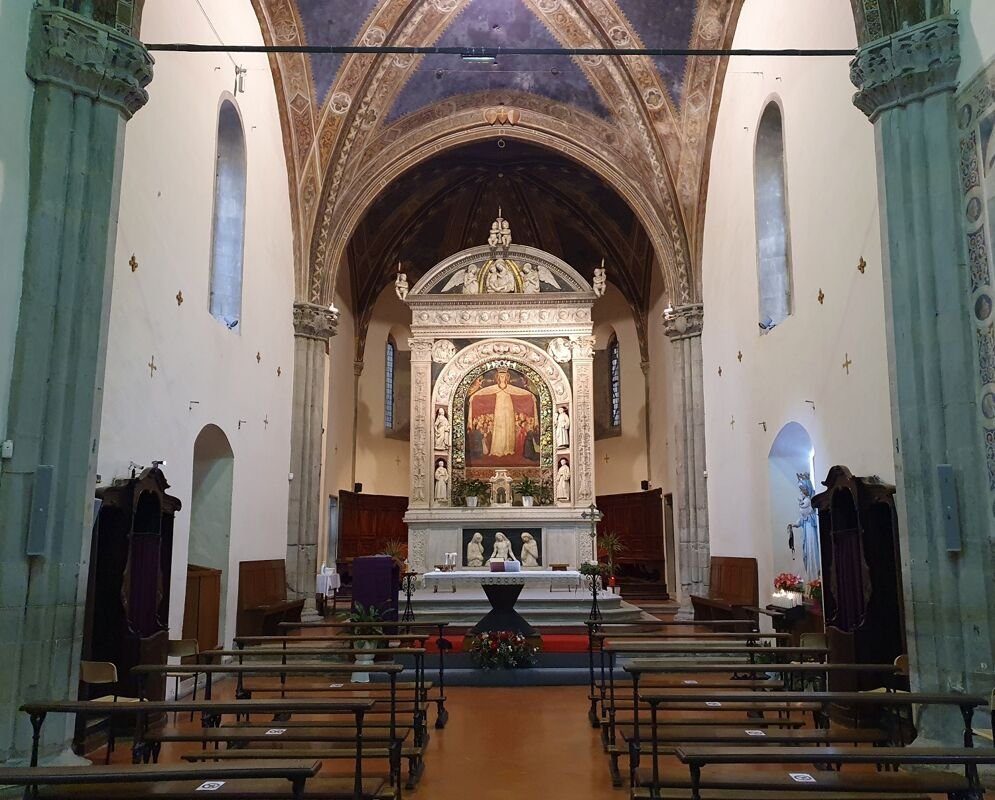
The parish church of Santa Maria della Pieve is built in the Romanesque style, very high and spacious. You can breathe the “spirit” of old, medieval Arezzo here. When you enter this church, right in front of the door you will notice a precious gold polyptych by Pietro Lorenzetti, dating from 1320.
Mecenate Archaeological Museum
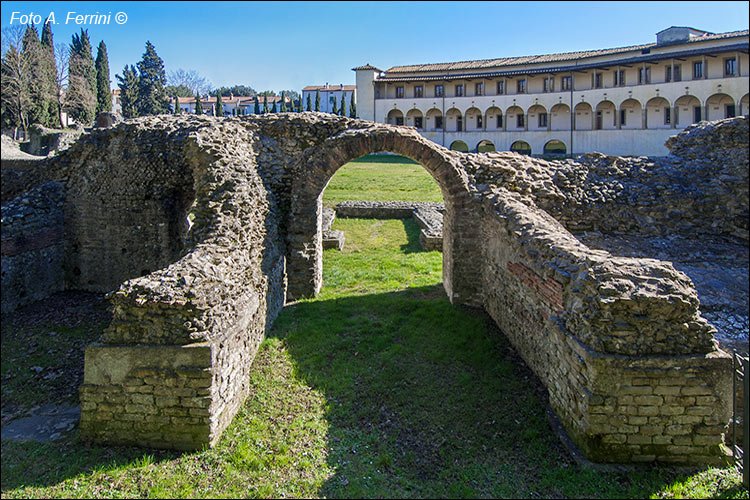

The Archaeological Museum of Arezzo, named after Gaius Cilnius Maecenas, holds one of the most important archaeological collections in Tuscany and, together with the Roman Amphitheatre, tells the story of the city’s millenary origins.
The museum is housed in the rooms of the former monastery of St Bernard, built in the 14th Century and with a singular arching shape as it stands right on the remains of the Amphitheatre of Arretium.
The itinerary unfolds over 26 rooms on two floors: on the ground floor we find artefacts tracing the history of Arezzo, from the Etruscan age to late antiquity, while on the upper floor we find the prehistoric section, themed rooms dedicated to ceramics, glassware and jewellery, bronzes and numismatics, and others related to the collections of illustrious Aretines, such as the Bacci family and the famous archaeologist Gian
Francesco Gamurrini.
Among the most significant works in the Etruscan section are the jewellery from the urban necropolis of Poggio del Sole, the painted terracotta that decorated the temples of the city, and the findings from the imposing extra-urban sanctuary of Castelsecco.
The Roman section houses the world’s richest collection of terra sigillata vases, which the ancients called Arretina vasa, popularly known as ‘coral vases’.
Sanctuary of la verna
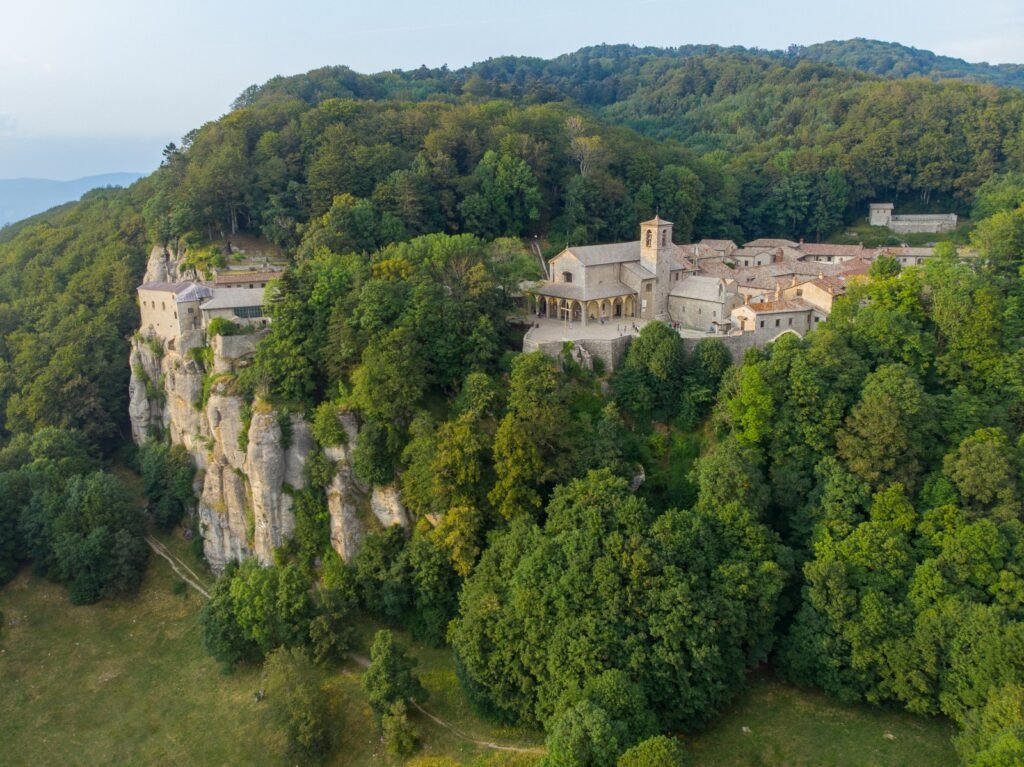
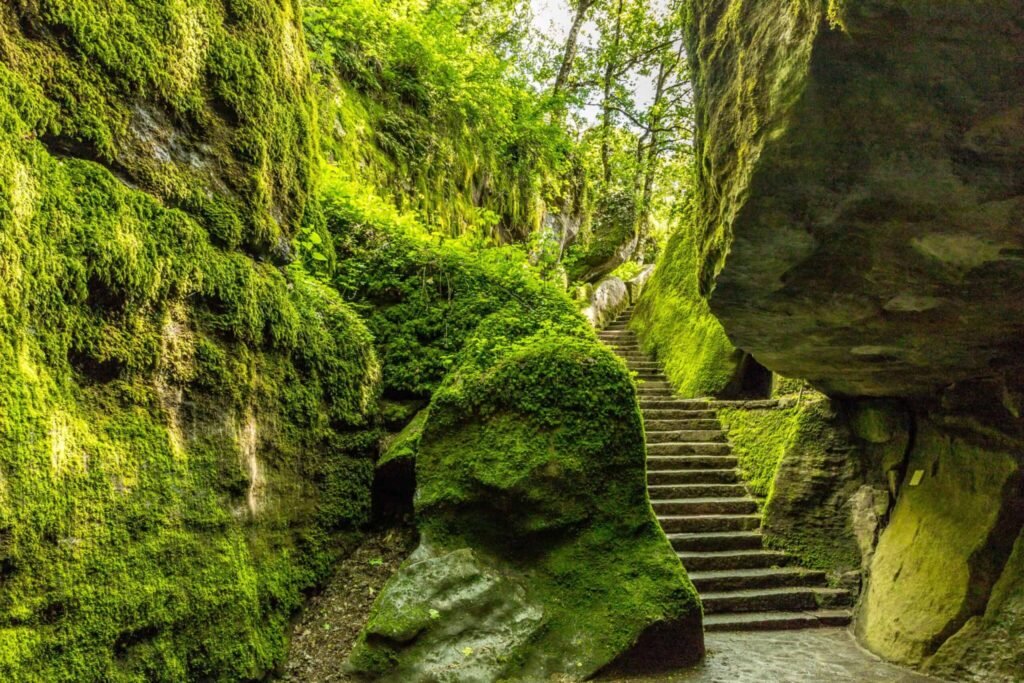
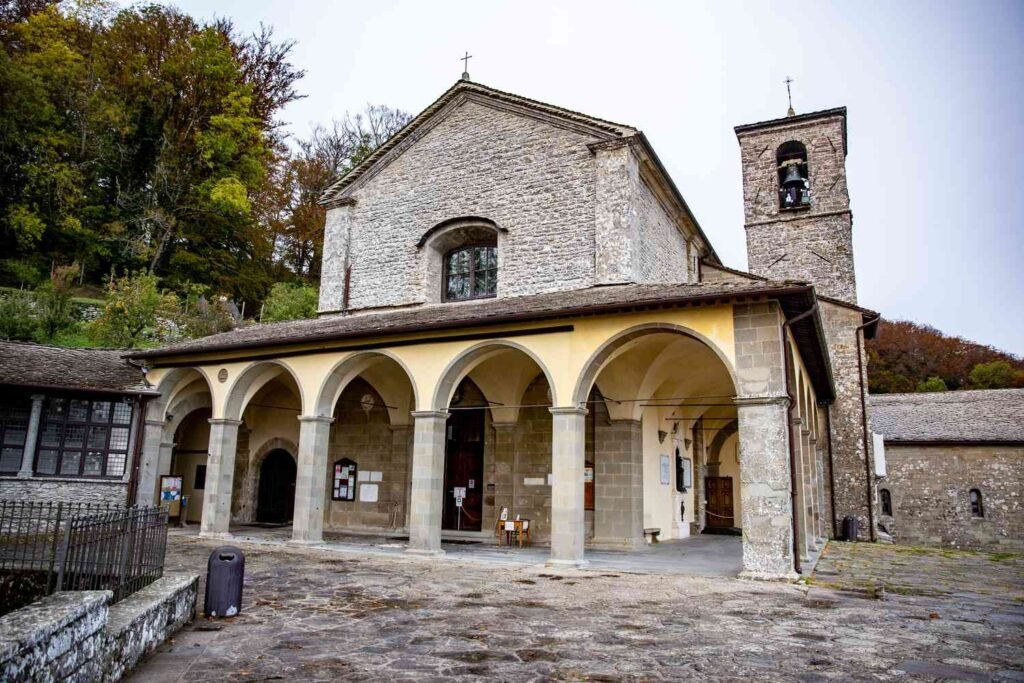
The Sanctuary of La Verna is a Franciscan sanctuary overlooking the town of Chiusi della Verna in the province of Arezzo, Italy. In this place Saint Francis of Assisi received the stigmata on September 14 or 15, 1224. The sanctuary is situated on the southern slope of Mount Penna, at an altitude of 1,128 m above sea level.
